
Hanover is a town in Hanover Township, Jefferson County, southeast Indiana, along the Ohio River. The population was 3,546 at the 2010 census. Hanover is the home of Hanover College, a small Presbyterian liberal arts college. The "Point," located on the campus of Hanover College, is the only place along the Ohio River that three bends of the river can be viewed at once. The tallest waterfall in Indiana, Fremont Falls, is located in Hanover.

Thomas Kirker was a Democratic-Republican politician from Ohio. He served as the second governor of Ohio.

John Rankin was an American Presbyterian minister, educator and abolitionist. Upon moving to Ripley, Ohio, in 1822, he became known as one of Ohio's first and most active "conductors" on the Underground Railroad. Prominent pre-Civil War abolitionists William Lloyd Garrison, Theodore Weld, Henry Ward Beecher, and Harriet Beecher Stowe were influenced by Rankin's writings and work in the anti-slavery movement.
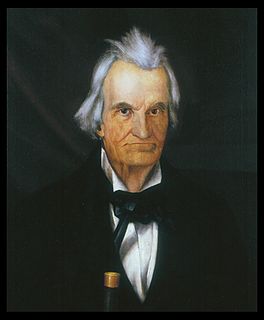
Thomas Metcalfe, also known as Thomas Metcalf or as "Stonehammer", was a U.S. Representative, Senator, and the tenth Governor of Kentucky. He was the first gubernatorial candidate in the state's history to be chosen by a nominating convention rather than a caucus. He was also the first governor of Kentucky who was not a member of the Democratic-Republican Party.

First Presbyterian Church of Dallas is a historic congregation at 1835 Young Street in the Farmers Market District of downtown Dallas, Texas (USA). The current building is a contributing property in the Harwood Street Historic District and a Dallas Landmark. The congregation was founded in 1856 as the first U.S. (Southern) Presbyterian Church organized in Dallas, and is the mother church from which many other Presbyterian churches in the area have stemmed.

David Steele, Sr. was a Reformed Presbyterian or Covenanter minister.

Old Brick Church, which is also known as Ebenezer Associate Reformed Presbyterian (ARP) Church or First Associate Reformed Presbyterian Church is a church built in 1788 about 4 mi (6 km) north of Jenkinsville on SC 213 in Fairfield County, South Carolina. It was named to the National Register of Historic Places on August 19, 1971. It is one of the few 18th-century churches surviving in the South Carolina midlands.

The First Church of Christ and the Ancient Burying Ground is a historic church and cemetery at 60 Gold Street in Hartford, Connecticut. It is the oldest church congregation in Hartford, founded in 1636 by Thomas Hooker. The present building, the congregation's fourth, was built in 1807, and was listed on the National Register of Historic Places in 1972. The adjacent cemetery, formally set apart in 1640, was the city's sole cemetery until 1803.

Thomas Williamson Means was a settler of Hanging Rock, Ohio, and a native of South Carolina. Together with his brother Hugh he became notable in Ashland, Kentucky, after he built the Buena Vista Furnace and became a director of the Kentucky Coal, Iron & Manufacturing Company. He was also the father of Ashland Mayor John Means. Means owned furnaces in Alabama, Kentucky, Ohio, and Virginia.

The Mechanicsburg Baptist Church is a historic church in the village of Mechanicsburg, Ohio, United States. Constructed for a Methodist congregation in the late nineteenth century, the building was taken over by Baptists after the original occupants vacated it, and it has been named a historic site.
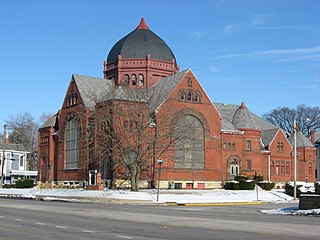
Third Presbyterian Church is a historic former Presbyterian church building in Springfield, Ohio, United States. A Romanesque Revival building completed in 1894 along Limestone Street on the city's northern side, Third Presbyterian is one of the final buildings designed by prominent Springfield architect Charles A. Cregar.

St. Philip's Episcopal Church is a historic Episcopal church located at 204 West 134th Street, between Adam Clayton Powell Jr. Boulevard and Frederick Douglass Boulevard in the Harlem neighborhood of Manhattan, New York City. Its congregation was founded in 1809 by free African Americans worshiping at Trinity Church, Wall Street as the Free African Church of St. Philip. First located in the notorious Five Points neighborhood, it is the oldest black Episcopal parish in New York City. Historically, it was extremely influential both while located in lower Manhattan and as an institution in Harlem, and many of its members have been leaders in the black community. In 2020, it reported 188 members, 111 average attendance, and plate and pledge income of $224,827.
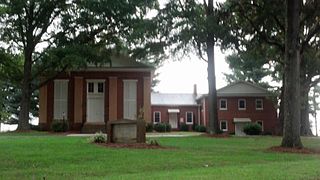
Back Creek Presbyterian Church and Cemetery is a historic Presbyterian church and cemetery in Mount Ulla, North Carolina currently affiliated with the Presbyterian Church in America (PCA).

Long Cane Associate Reformed Presbyterian Church is a historic Associate Reformed Presbyterian church in McCormick County, South Carolina four miles west of Troy, South Carolina on SC 33-36. Adjacent to the church building is a cemetery dating to circa 1790.
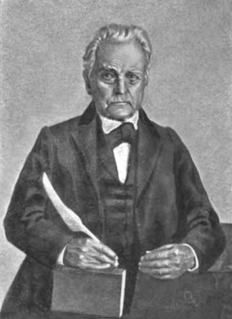
Joseph Darlinton was an American politician in the U.S. state of Ohio and in the Northwest Territory prior to Ohio statehood. Darlinton represented Adams County as a member of the Northwest Territory House of Representatives and the Ohio Senate. Darlinton also served as a delegate to the convention that drafted the first state constitution for Ohio.
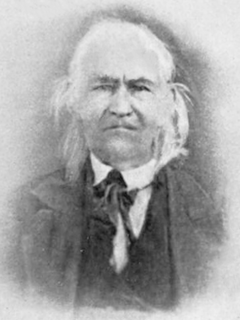
Israel Donalson was an early settler in the Northwest Territory, and helped write the first Ohio Constitution.
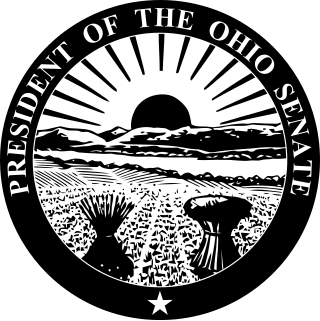
Abraham Shepherd (1776–1847) was a politician from Ohio, United States who was a leader of both houses of the Ohio General Assembly early in the 19th century.
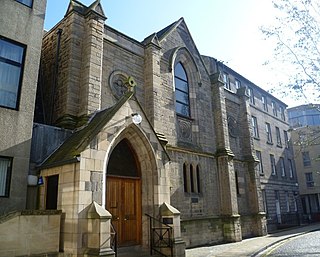
The King Khalid Building is an event space in the Southside, Edinburgh, Scotland, owned and operated by the Royal College of Surgeons of Edinburgh. The building was constructed Roxburgh Free Church in 1847 and converted to its current use in 1982.

West St Giles' Parish Church was a parish church of the Church of Scotland and a burgh church of Edinburgh, Scotland. Occupying the Haddo's Hole division of St Giles' from 1699, the church was then based in Marchmont between 1883 and its closure in 1972.





















